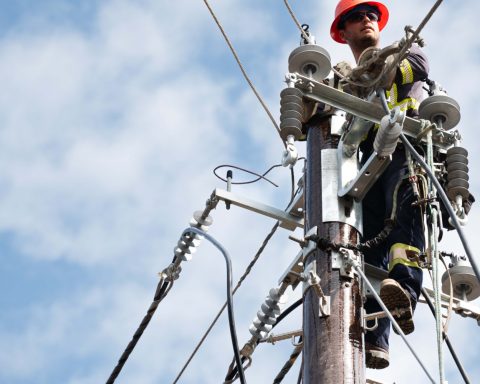WASHINGTON (NW) — President Donald Trump signed a series of executive orders aimed at reviving the U.S. coal industry, a move that runs counter to global efforts to reduce carbon emissions.
“We’re bringing back an industry that was abandoned,” Trump said during a White House event attended by about three dozen coal miners wearing hard hats. “We’re going to put the miners back to work.“
The orders seek to extend the life of coal-fired power plants, some of which were expected to close, by invoking emergency powers under the 1950 Defense Production Act. The orders also direct Energy Secretary Chris Wright to evaluate whether metallurgical coal, used in steelmaking, should be classified as a “critical mineral.” Such a designation could enable the federal government to boost production under national security provisions.
Sen. Shelley Moore Capito, (R-WV), was present at the White House event. Although representing a coal-heavy state, Capito has supported federal investments in renewable energy, including through earmarks aimed at phasing out coal in West Virginia.
Another directive asks the U.S. attorney general to review state climate laws that may restrict coal and other fossil fuel development and pursue legal avenues to block their enforcement.
The Interior Department was also instructed to formally end a moratorium on new coal leasing on federal lands and to prioritize new leases, allowing private companies to purchase rights to extract coal.
Trump, a Republican who took office in January 2017, campaigned on a pledge to increase domestic energy production and has aggressively rolled back environmental regulations throughout his presidency.
The new actions come as U.S. electricity demand rises for the first time in two decades, driven by energy-intensive technologies such as artificial intelligence, electric vehicles and cryptocurrency mining.
Following the announcement, shares of coal producers Peabody Energy and Core Natural Resources rose about 9%.
The Energy Department also said it would make $200 billion in financing available through its loan programs office, including funding for new coal technologies. Under past administrations, these loans were rarely used for coal projects, with limited investments in carbon capture technologies.
Coal accounted for less than 20% of U.S. electricity generation in 2023, down from about 50% in 2000, according to the Energy Information Administration. The shift is largely attributed to an increase in natural gas production and growth in renewable sources such as wind and solar.
Hundreds of coal-burning plants have shut down in recent years due to ongoing regulatory risks. Today, the average coal plant operates only about 40% of the time.












